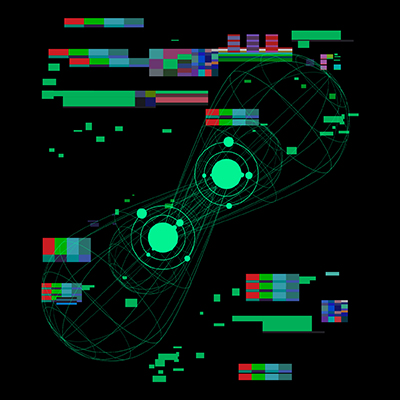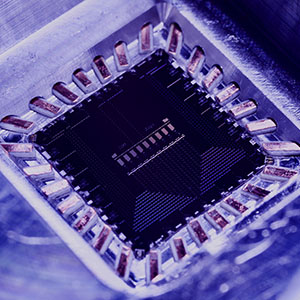Highlights
Finding quantum advantage for analogue systems
 In a new work, CQT Principal Investigator Dimitris Angelakis’ group has put a new perspective on what quantum advantage is and how to achieve it with current hardware. Image: Vladyslav Severyn/Shutterstock.com
In a new work, CQT Principal Investigator Dimitris Angelakis’ group has put a new perspective on what quantum advantage is and how to achieve it with current hardware. Image: Vladyslav Severyn/Shutterstock.com
Quantum computers are said to show quantum advantage when they can efficiently perform a computational task that classical computers cannot. CQT researchers have published evidence of a new route to advantage for analogue quantum systems.
Analogue quantum systems make use of a system’s natural quantum dynamics for computation and simulation. Unlike universal digital quantum computing, this approach does not require the implementation of logic gates.
CQT Principal Investigator Dimitris Angelakis says, “This puts a new perspective on what quantum advantage is and how to achieve it with current hardware in a different way.”
When Google first claimed quantum advantage in 2019, it was a milestone for the field. The Google team’s demonstration used random digital circuits built using superconducting qubits. Since then, other teams have demonstrated quantum advantage with boson sampling using photonic systems.
The CQT team’s work suggests a third option to demonstrate quantum advantage, by sampling from driven many-body systems. This could potentially be implemented on many more systems, including currently available platforms such as trapped ions and cold atoms.
It was published in Quantum Science and Technology on 13 March 2023. Since the work was posted to the physics preprint server ArXiv in 2020, it has also garnered interest from experimental groups.
Dimitris’ co-authors are his former PhD students, now CQT graduates, Jirawat Tangpanitanon and Supanut Thanasilp, his former CQT Research Fellow Marc-Antoine Lemonde, and collaborator Ninnat Dangniam.
In the thermal phase
Physicists refer to assemblies of particles – from molecules to states of matter – where quantum effects are at play as ‘quantum many-body systems’. Researchers struggle to model such systems with classical computers because the number of parameters needed to describe them grows exponentially with the number of particles.
“Due to the hardness of the numerics of such simulation experiments, we knew that many-body systems are very hard to simulate for more than a decade now, but a hard, mathematical proof was missing. The two communities, physicists and computer scientists were separated by a terminology barrier,” says Dimitris.
The researchers looked at the specific class of analogue quantum many-body systems that can be controllably driven to thermalisation. Thermalisation is a phase of matter where the system is at thermal equilibrium. Information wise, the system can be pictured as spreading from a specific part of the Hilbert space – the many-dimensional space that its quantum state occupies – into more and more areas of the Hilbert space making it hard for a classical computer to keep track with it.
The researchers considered a usual sampling task, which is the approach used in previous advantage proposals and experiments. Say a system has n number of qubits. Measuring the qubits gives n 1s and 0s in a list, known as a bit string. There are 2n possible bit strings. The task is to sample and predict the probability distributions for the bit strings after certain manipulations happen in the quantum system.
In the thermal phase, the probability distributions of the system are following what is called the “Circular Orthogonal Ensemble” (COE). Making use of some mathematical theorems from complexity theory, the researchers were able to claim that there is strong evidence that sampling from the COE is a classically intractable task.
“Now we have this really deep connection that the computational complexity of a system is inherently connected to what physical phase it is in,” says Dimitris.
Following intuition
The group has been working on analogue quantum computing and simulation for a long time. In 2017, the group collaborated with Google to investigate the phenomenon called many-body localisation, another related quantum phase transition. The team had the intuition then that when many-body localised systems thermalise, these systems should be hard to simulate.
“I’m proud of my team’s work,” says Dimitris. “We showed what many experimentalists believed to be true for years – that analogue quantum many-body systems can be used to showcase quantum advantage.” The results for thermalisation are expected to apply to many driven quantum many-body systems found in different technologies including cold atoms, ions and superconducting qubits.
The team is now working with experimentalists to realise the advantage.
Learn more
Related Stories
 | Doing quantum machine learning without going digital January 12 2021 |
 | CQT researchers collaborate in quantum simulations on Google's superconducting chip December 01 2017 |






